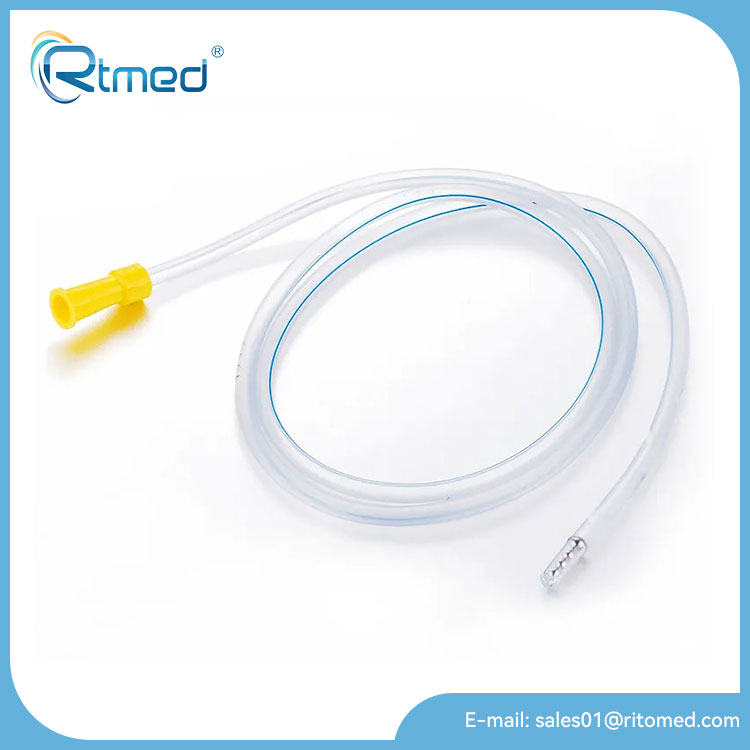Medical Tubes: The Lifelines of Modern Healthcare
2024-12-12
Medical tubes are critical components in the healthcare industry, providing essential functionality across a wide range of applications. From delivering medication to enabling life-saving procedures, these tubes are indispensable in ensuring patient care and safety. In this blog, we’ll explore the types, materials, and advancements in medical tubes, and their pivotal role in modern medicine.

Types of Medical Tubes and Their Applications
Medical tubes come in various types, each designed for specific medical purposes. Here are some common types:
1. Catheters:
- Used for draining fluids or administering medication.
- Commonly used in urology, cardiology, and vascular procedures.
2. IV Tubes:
- Deliver fluids, nutrients, and medications directly into the bloodstream.
- Essential in emergency and intensive care settings.
3. Respiratory Tubes:
- Support breathing in patients with respiratory issues.
- Includes endotracheal and tracheostomy tubes.
4. Surgical Drainage Tubes:
- Remove fluids or gases from the body after surgery.
- Help prevent infections and aid in the healing process.
5. Feeding Tubes:
- Provide nutrition directly to patients who cannot eat orally.
- Widely used in critical care and rehabilitation.
6. Diagnostic Tubes:
- Used in diagnostic procedures such as colonoscopy or bronchoscopy.
- Enable visualization and sampling within the body.
Materials Used in Medical Tubes
The choice of material is crucial in medical tube manufacturing, as it directly impacts performance, biocompatibility, and safety.
- PVC (Polyvinyl Chloride):
- Durable and cost-effective.
- Common in IV and drainage tubes.
- Silicone:
- Flexible and biocompatible.
- Ideal for catheters and respiratory tubes.
- Polyurethane:
- Strong and resistant to wear.
- Frequently used in long-term implants.
- TPE (Thermoplastic Elastomers):
- Combines flexibility with chemical resistance.
- Suitable for multi-purpose medical tubing.
Key Features of Medical Tubes
1. Biocompatibility:
- Ensures safe interaction with the human body without causing adverse reactions.
2. Flexibility and Strength:
- Designed to withstand bending, stretching, and pressure without compromising function.
3. Chemical Resistance:
- Prevents degradation when exposed to medications and bodily fluids.
4. Sterilization Compatibility:
- Can endure various sterilization methods like autoclaving, ethylene oxide, or gamma radiation.
Technological Advancements in Medical Tubing
The medical tubing industry is evolving rapidly, driven by technological innovation:
- Minimally Invasive Procedures:
- Development of micro-bore tubing for precise delivery and minimal tissue damage.
- Drug Delivery Integration:
- Tubes with embedded channels for controlled and sustained medication release.
- Anti-Microbial Coatings:
- Reduce the risk of infections, particularly in long-term use cases.
- Smart Tubing:
- Incorporation of sensors for real-time monitoring of flow rate, pressure, and patient metrics.
Sustainability in Medical Tubing
With growing concerns about environmental impact, the industry is exploring sustainable practices such as:
- Using recyclable materials like bioplastics.
- Developing tubing systems that reduce medical waste.
- Implementing energy-efficient manufacturing processes.
Challenges and Solutions
1. Material Compatibility:
- Ensuring compatibility with a wide range of drugs and fluids.
- Use of multi-layer tubing to separate incompatible substances.
2. Infection Control:
- Risk of biofilm formation in long-term usage.
- Advancements in antimicrobial technologies address this issue.
3. Customization Needs:
- Diverse medical applications demand tailored designs.
- Collaboration between manufacturers and healthcare providers ensures precise solutions.
Conclusion
Medical tubes are truly the lifelines of modern healthcare, enabling critical treatments and improving patient outcomes. With continuous advancements in materials, design, and functionality, these humble components are becoming smarter, safer, and more sustainable. As the healthcare industry evolves, medical tubing will undoubtedly remain a cornerstone of innovation and care.


